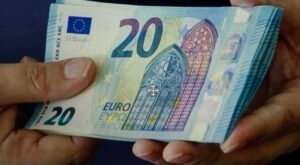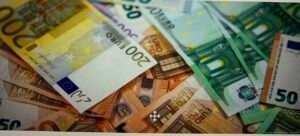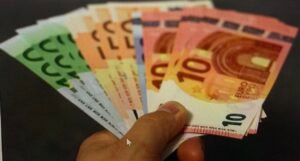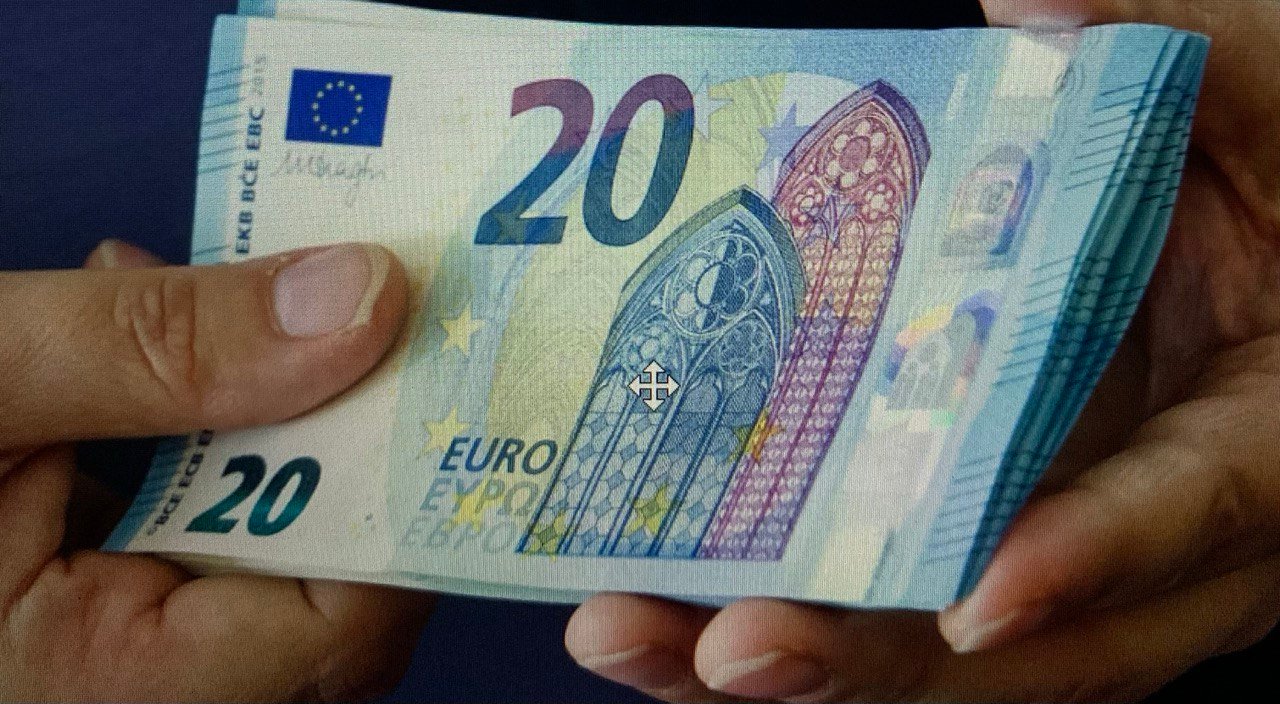Buy Counterfeit Euros | Buy Counterfeit 20 Euros
Buy Fake Euros Online has been a persistent challenge across the eurozone, with Germany experiencing a significant surge in counterfeit euro banknotes and coins in recent years.
The issue not only disrupts financial systems but also undermines public confidence in the euro as a reliable currency.
This article delves into the latest trends in counterfeit euros in Germany, the underlying causes, and the measures put in place to combat this problem.

The Growing Trend of Counterfeit Euros in Germany
The Deutsche Bundesbank, Germany’s central bank, reported a notable increase in Counterfeit Euro Banknotes in 2023. Approximately 56,600 counterfeit notes with a nominal value of €5.1 million were detected, representing a 28.2% increase from the previous year. This rise in counterfeit notes, especially high-denomination ones, has raised alarms among authorities and financial institutions alike.
High-value banknotes such as €200 and €500 were predominantly targeted by counterfeiters. These notes were frequently used in fraudulent transactions involving luxury goods, including jewelry, gold bars, luxury watches, and high-end vehicles. The preference for high-denomination counterfeits reflects the perpetrators’ intent to maximize their gains while minimizing the number of counterfeit bills in circulation.
Counterfeit Coins: An Emerging Concern
In addition to banknotes, Counterfeit Euro Bills have also become a significant concern. Germany recorded approximately 115,900 counterfeit coins in 2023, up from around 73,400 in the previous year. This marks a staggering increase in fake coins detected within payment systems. Among these, €2 coins accounted for 95% of the counterfeit coins, making them the most commonly counterfeited denomination.
The increase in counterfeit coins has brought additional challenges to payment systems, as coins are often perceived as harder to fake due to their metallic composition and intricate designs. However, advances in counterfeiting techniques have enabled the production of convincing fake coins that can deceive unsuspecting users.
International Counterfeiting Operations
Germany’s Fake Euro Banknotes problem is not confined to domestic operations. Investigations have uncovered sophisticated counterfeiting networks operating abroad that have a significant impact on the German economy.
For instance, in August 2024, Italian authorities dismantled a major counterfeiting operation in Naples. This operation, linked to the Camorra crime syndicate, produced high-quality fake €20, €50, and €100 notes. These counterfeits were found circulating in at least ten European countries, including Germany, highlighting the transnational nature of the counterfeiting threat.
Economic and Social Implications
The economic implications of counterfeit euros are substantial. In 2023 alone, Germany witnessed a 90% increase in financial losses caused by counterfeit banknotes compared to the previous year. These losses not only burden businesses and financial institutions but also erode consumer confidence in the currency.
Counterfeit money can also disrupt everyday transactions. Businesses, particularly small enterprises, face the risk of unknowingly accepting counterfeit notes or coins, which are subsequently rejected by banks. This can lead to financial losses for retailers and strained relationships with customers.

Detection and Prevention Measures Of Counterfeit Euros
To address the growing threat of Fake Euros, the Deutsche Bundesbank has emphasized the importance of public awareness and education. The “feel, look, tilt” method remains a cornerstone of counterfeit detection:
- Feel: Genuine euro banknotes have a distinct texture due to their cotton-paper composition. The raised print on specific areas, such as the denomination and main image, provides a tactile security feature.
- Look: Authentic notes include visible security features such as watermarks, security threads, and microprinting.
- Tilt: Tilting the note reveals holograms and color-changing ink, which are difficult for counterfeiters to replicate accurately.
- Other Measures: In addition to the “feel, look, tilt” method, there are other security features embedded in euro banknotes and coins that citizens can use to verify their authenticity. These include ultraviolet light detection and magnifying glasses for examining microprinting.
The Bundesbank also offers free training sessions on counterfeit prevention, targeting banks, retailers, and individuals. These workshops aim to enhance public knowledge and equip participants with practical skills to identify counterfeit money.
Buy Fake Euros Online | Fake 20 Euros Near Me
Technological Advancements in Counterfeiting
The rise in counterfeit euros is partly due to advancements in printing and production technology. High-resolution printers, sophisticated software, and improved materials now allow counterfeiters to produce convincing fakes.
Additionally, the dark web has made it easier than ever to access counterfeit currency and counterfeiting equipment. These tools, once difficult to obtain, are now readily available to criminal networks, further fueling the issue.
Also, the emergence of digital currencies and payment methods has created new opportunities for counterfeiting.
International Cooperation and Law Enforcement
Given the transnational nature of the counterfeiting problem, international cooperation is essential. Germany collaborates with other European nations and law enforcement agencies such as Europol to combat counterfeiting. Joint operations, intelligence sharing, and coordinated efforts have led to the dismantling of several counterfeit production networks across Europe.
In addition to law enforcement, the European Central Bank (ECB) plays a critical role in maintaining the integrity of the euro currency. The ECB continuously updates the design of euro banknotes to incorporate advanced security features that are harder to replicate. The introduction of the new “Europa series” banknotes is a testament to these efforts, featuring enhanced holograms, improved color-shifting ink, and innovative printing techniques.
Future Outlook and Recommendations
While significant progress is going on in combating counterfeit euros, the problem persists due to the ingenuity of counterfeiters and the growing sophistication of their techniques. Moving forward, a multi-facet approach is require to solve this issue effectively:
- Public Awareness Campaigns: Educating the public about counterfeit detection methods remains crucial. Increased awareness can reduce the circulation of counterfeit currency and discourage its use in transactions.
- Advanced Security Features: The ECB and national central banks should continue to innovate and update banknote designs with cutting-edge security features that are difficult to replicate.
- Technological Solutions: Investment in counterfeit detection technologies, such as automated scanners and mobile apps, can empower individuals and businesses to verify the authenticity of banknotes and coins quickly.
- Strengthening International Collaboration: Enhanced coordination between European nations and law enforcement agencies can help dismantle counterfeit production networks and prevent their resurgence.
- Legal and Regulatory Measures: Stricter penalties for counterfeit-related crimes can act as a deterrent, discouraging individuals and groups from engaging in counterfeiting activities.
These efforts, along with continued vigilance from citizens and authorities, can help mitigate the risk of counterfeit euros in Germany and beyond. By staying inform and vigilant, we can all play a role in protecting our currency and economy from this illegal activity.
The rise of counterfeit euros in Germany is a growing concern that requires enormous efforts from authorities, businesses, and the public.
While technological advancements and international collaboration have led to significant achievements in counterfeiting prevention, the evolving nature of the threat demands continuous vigilance and innovation.
By fostering awareness, leveraging technology, and strengthening partnerships, Germany can mitigate the impact of counterfeit euros and preserve the integrity of its financial system. Let us all do our part to safeguard our currency and economy from this criminal activity. So, it is essential for everyone to stay informed and educated about counterfeiting and actively participate in efforts to combat it.
Let’s continue to “feel, look, tilt” and be vigilant against fake euros!


